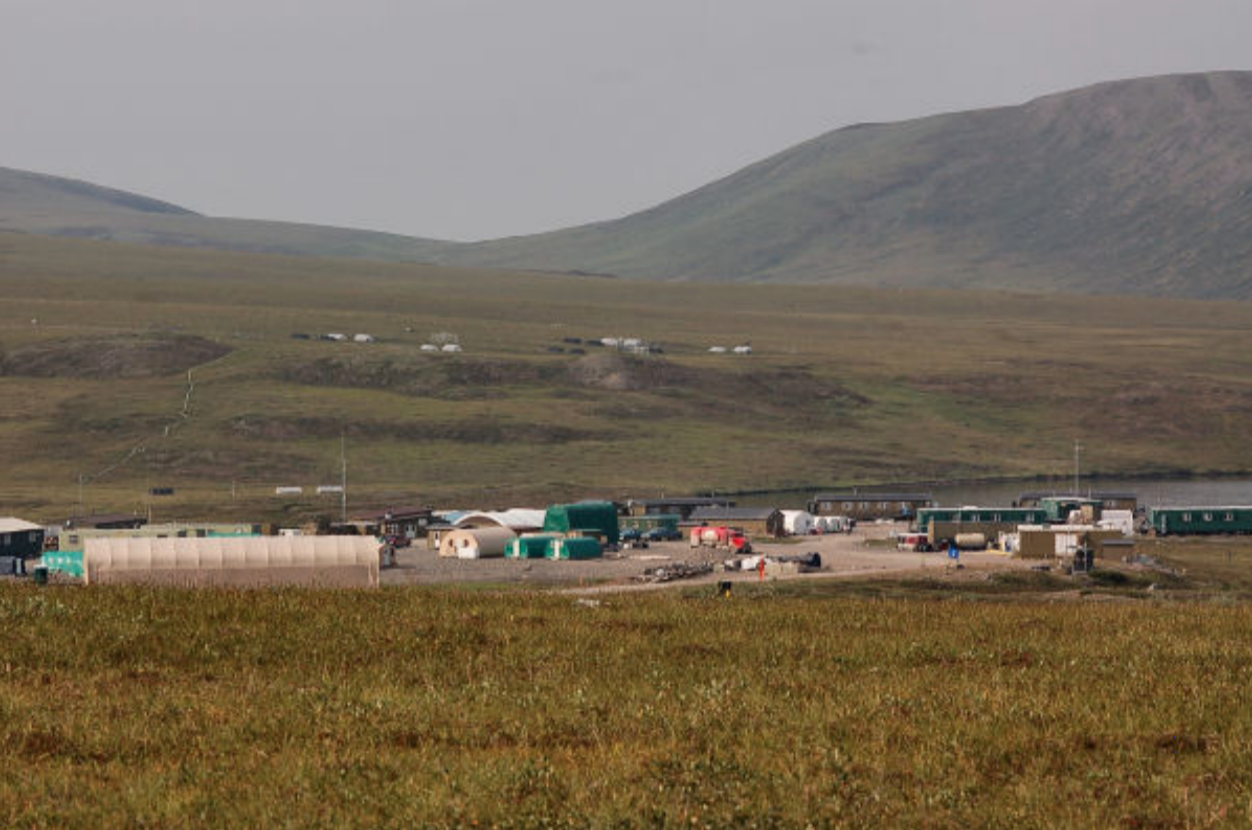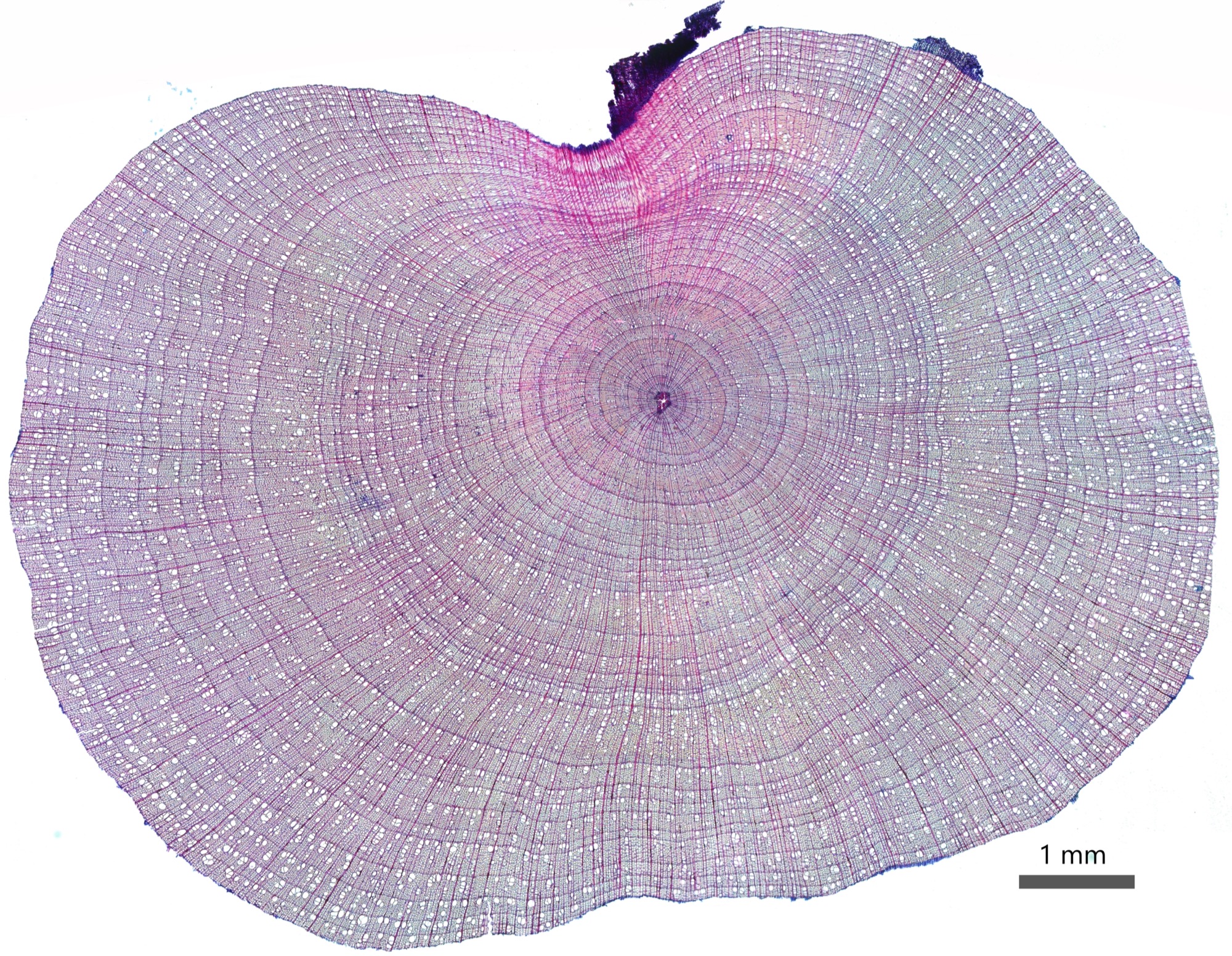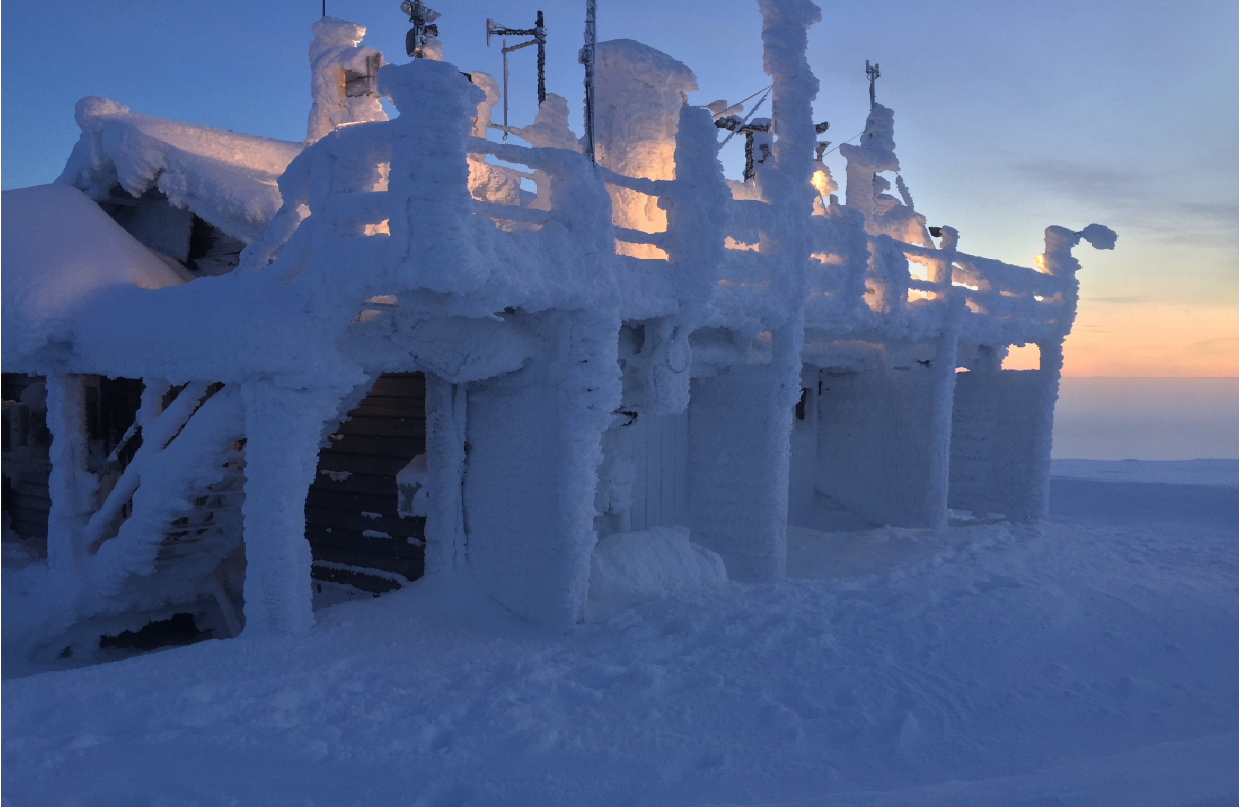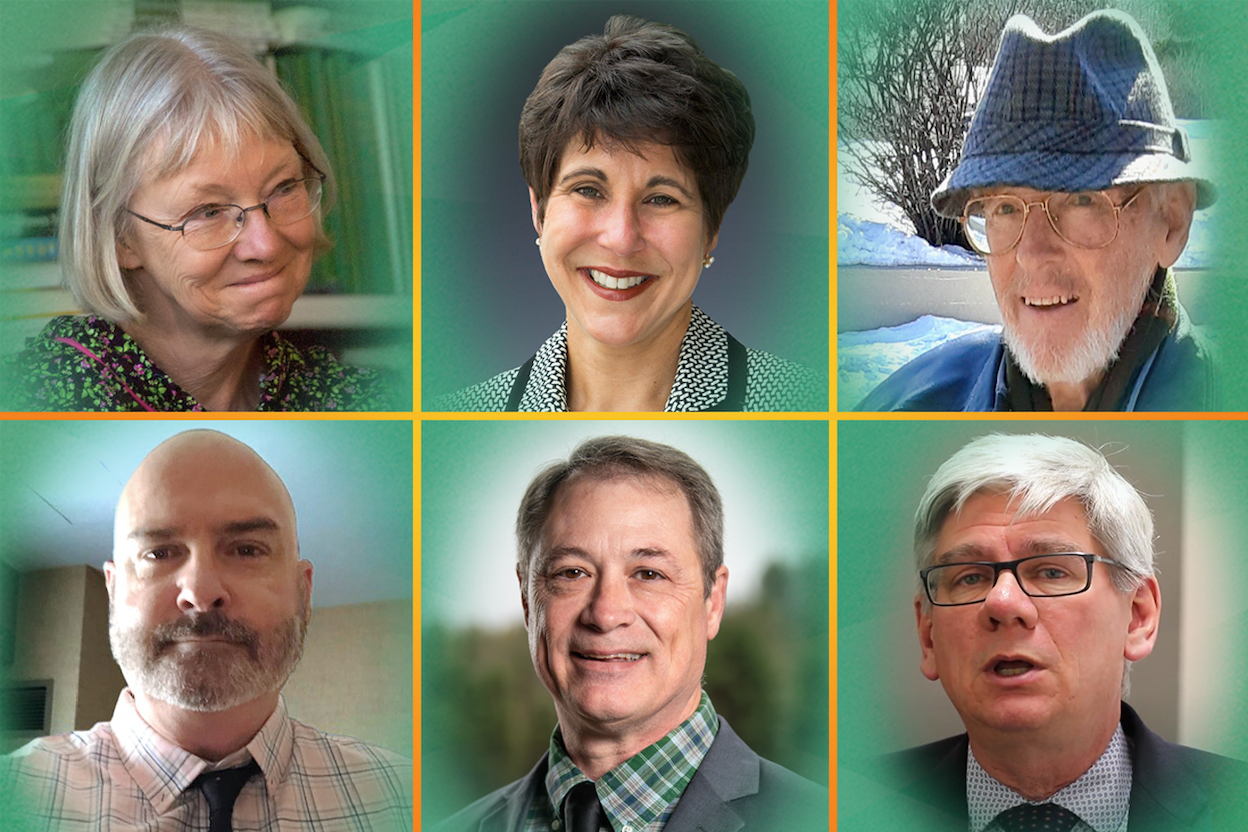Mysteries of the Arctic’s water cycle: Connecting the dots
by Catalina Myers |

For three decades, Professor Jeff Welker, Ph.D., in UAA’s Department of Biological Sciences, has been thinking about, studying and running research programs focused on water and its vital role in the ecological sciences of the North.
Recently his program has turned its attention to sea ice loss and the consequences throughout the Arctic and beyond. Articulating how sea ice loss drives amplified warming, atmospheric moisture transport out of, into and within the Arctic and the consequences for landscapes, societies have been playing a game of connect the dots, but on a massive global scale.
Welker, who is the inaugural University of the Arctic research chair and affiliated with the University of Oulu in Finland, co-authored and published the results of two water-related studies with a pair of his former Fulbright postdoctoral fellows, Dr. Agata Buchwal and Dr. Hannah Bailey, who spent several years at UAA. Currently, Buchwal is a faculty member in Poland and Bailey is a postdoctoral fellow with the University of Oulu. While each study focused on two separate Arctic water issues, one on vegetation and the other on precipitation in the Arctic, both studies had one common denominator: sea ice.
Both studies discovered that the simultaneous warming of the North and declining sea ice in the Arctic is setting off a chain reaction with global consequences for animals, plants and people who inhabit the world’s most northern regions.
Tiny rings, big results
As the Arctic continues to warm, scientists began to notice a puzzling “greening” and “browning” effect occurring across the tundras of the circumpolar north. Welker’s study with lead scientist Buchwal and a pan-Arctic research team tracked the relationship between dwindling sea ice and shrub growth, discovering a link between plants that were thriving versus ones that were withering away.

The study applied the same method of analyzing tree growth rings, a technique used in lower latitude forests, to Arctic shrubs, such as dwarf birch and willow. They discovered that the tiny microscopic growth rings left a history of growth rates, past climate conditions and ultimately, a link between sea ice loss and their ability to thrive.
“What we discovered in Agata’s paper, published in the U.S. Proceedings of the National Academy of Sciences, was that the response of the vegetation around the Arctic to sea ice loss and warming is not the same,” said Welker. “If you look at the graph of the tree rings, you can see how the tree ring growth varies. Now, with our records, you can see the sea ice declining and some of the populations of shrubs respond to that with less growth, while some respond with more growth.”
With the combination of sea ice loss over multiple decades and warmer summer temperatures trending across the Arctic, 57% of shrubs sampled from the region — around Toolik Field Station, a research facility about 370 miles north of Fairbanks — grew more and were called “increasers.” However, 39% experienced a sharp decline in growth (decreasers), indicating their inability to handle the increasing summer heat and drying of soils.
According to Welker, shrub growth response is variable; even though the region above the Arctic Circle is all considered tundra, it is not a homogeneous region. Specific areas receive more or less precipitation, resulting in diverse landscape and vegetation growth patterns.
“If you warm habitats that are already moist, which is what Toolik Lake is like, it’s wet and soggy up on the tussock tundra, we’ve seen that the tundra vegetation responds with a strong increase in growth because it’s not water-limited,” Welker said. “But if you’re looking at places that are already a little bit dry, you make them drier with warming, all of a sudden, they become water-limited and their growth decreases, like we see in west-central Greenland”
Regarding human impact, it is the connection between sea ice-warming and more or less
shrub forage for caribou or reindeer that will impact subsistence communities and
people relying on caribou and reindeer herds. Increases in caribou and reindeer forage
may occur in some regions, and more animals may be present for hunting. Concurrently,
in other regions, there may be reductions in forage and potentially fewer caribou
and reindeer for hunting and harvesting, reducing the food supply for some subsistence
communities.
Wild winter weather
In 2018, the “Beast from the East” descended upon Northern Finland and all of continental Europe, bringing heavier snowfall than the region had ever experienced before and, according to United Kingdom news sources, was one of the costliest winter snowstorms to hit the region, bringing the nation’s economy to an almost standstill.
The culprit? Sea ice — or lack of it — specifically in the Barents Sea, a 540,000 square mile stretch of ocean located off the coast of Russia and Norway that used to be covered in sea ice all winter long, but it is now about 60% open water. This loss has been the focus of Welker and his co-author Bailey’s study, published in Nature Geosciences.
“The big picture is, what does sea ice mean to the Arctic water cycle,” said Welker. “We’re talking in terms of precipitation, transport of moisture within the Arctic and the transport of water vapor and precipitation out of the Arctic."
Based in northern Finland, the study focused on how sea ice loss influences atmospheric conditions and transport patterns in the Arctic. Bailey, Welker and colleagues used isotope geochemistry measurements of water vapor; continuously pulling air samples from the rooftop of Finland’s premier atmospheric chemistry station located at the Pallas National Park in Arctic Finland. The team pulled samples every second in months prior to, during and after this extreme event. These water isotope fingerprint (δ18O and δ2H) measurements reflect the moisture sources off the Arctic ice pack and the injection of Barents ocean water vapor as the parcels of air travel out of the Arctic. This isotope data was combined with moisture transport modeling and historical data, to show that in the Barents Region — where the most significant loss of sea ice has occurred — is directly providing the moisture driving the intense winter storms hitting Finland, Scandinavia and Western Europe.

Welker said 50 years ago, these mega winter storms with record-breaking snowfalls would never have even occurred. By the time the storm originating from a totally ice-covered Arctic reached the coast of Norway, the storm would have dissipated. However, as the Barents Sea has continuously experienced massive sea ice loss and more open water, the sudden collision of cold air passing over the warm ocean water, this creates the perfect conditions for a mega-storm.
“That happens because of sea ice loss,” Welker said. “We can see this fingerprint of that big injection of water vapor from the open Barents Sea. We can also see historically that the Barents Sea used to be covered in sea ice and that there has been massive sea ice loss. Anytime you pass a parcel of cold air over a relatively warmer ocean, the air parcels being transported out of the Arctic just gets injected with moisture, in winter and you’re going to get lots of snow under these conditions.”
These massive storm events are becoming more frequent, and Welker expects that trend will continue as the Arctic continues to warm, sea ice becomes lower across the Arctic Basin, and will directly impact communities. These extreme events like in 2018 in Western Europe, with populations in the millions, will affect transportation of goods and services, livestock herds, crops and utilities, all with large social and economic consequences — all a result in part of sea ice loss.
Connecting the dots
As the Arctic continues to warm, Welker and scientists across the globe scramble to unpack the clues to predict the planet's response to this warming and the natural consequences and impacts it will have on people, plants and animals not only in the Arctic but across the globe.
In the Arctic’s changing terrestrial landscape, tree shrub growth or decline will directly impact caribou and reindeer populations, which has a direct consequence for communities and people who rely on healthy herd populations for subsistence living. In addition, the atmospheric consequences mean continuing extreme weather conditions, especially in winter for certain regions in the world and how economies, transportation and daily life are affected.
It’s all connected and leads back to the loss of sea ice in the Arctic Ocean. Welker, along with his co-authors and the collaborative efforts of the international scientific community, is making gains in understanding the outcomes of a warming Arctic — connecting the dots — and offering some insight into the future of the planet.
 "Mysteries of the Arctic’s water cycle: Connecting the dots " is licensed under a Creative Commons Attribution-NonCommercial 4.0 International License.
"Mysteries of the Arctic’s water cycle: Connecting the dots " is licensed under a Creative Commons Attribution-NonCommercial 4.0 International License.













